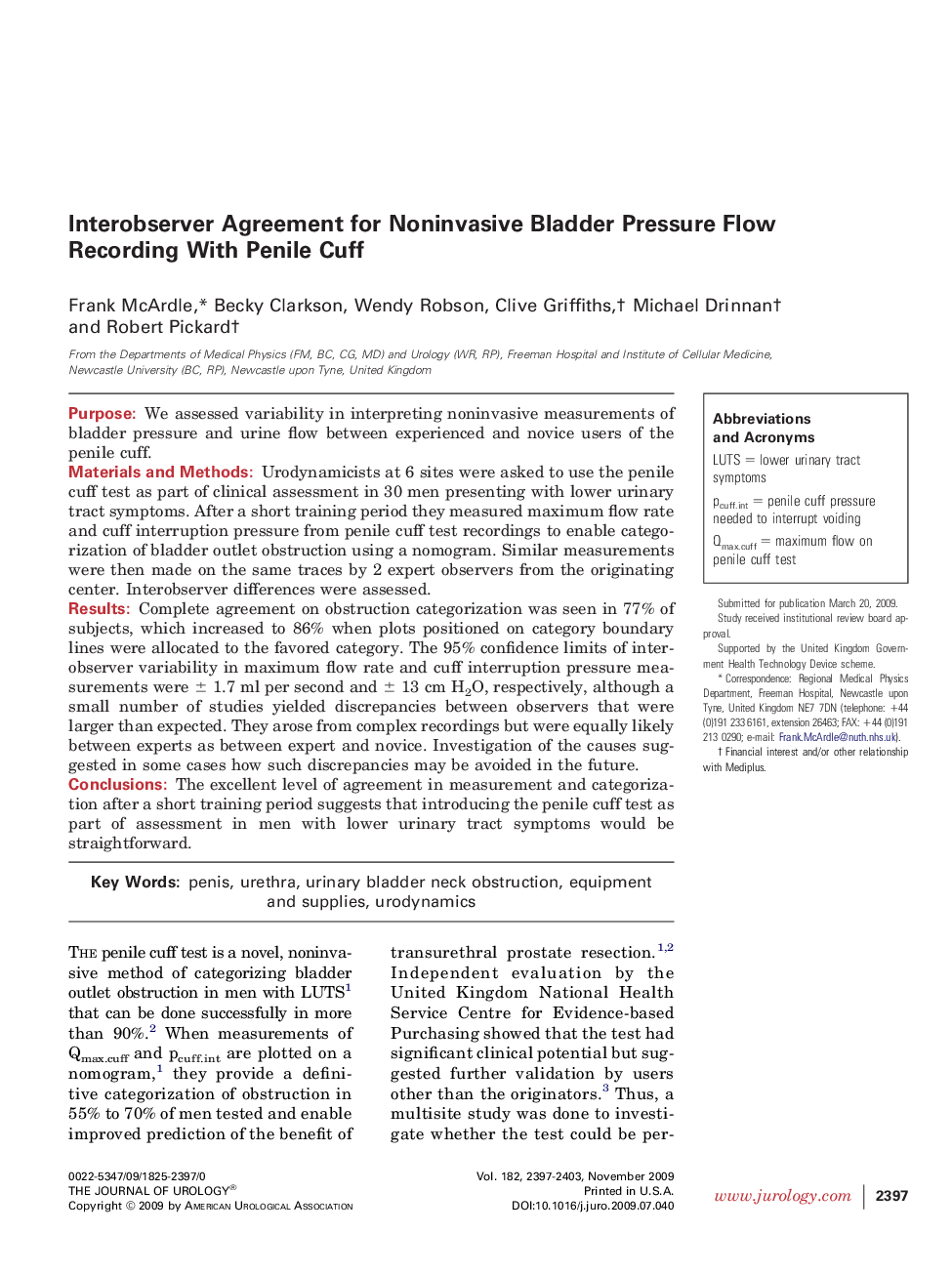| Article ID | Journal | Published Year | Pages | File Type |
|---|---|---|---|---|
| 3868348 | The Journal of Urology | 2009 | 7 Pages |
PurposeWe assessed variability in interpreting noninvasive measurements of bladder pressure and urine flow between experienced and novice users of the penile cuff.Materials and MethodsUrodynamicists at 6 sites were asked to use the penile cuff test as part of clinical assessment in 30 men presenting with lower urinary tract symptoms. After a short training period they measured maximum flow rate and cuff interruption pressure from penile cuff test recordings to enable categorization of bladder outlet obstruction using a nomogram. Similar measurements were then made on the same traces by 2 expert observers from the originating center. Interobserver differences were assessed.ResultsComplete agreement on obstruction categorization was seen in 77% of subjects, which increased to 86% when plots positioned on category boundary lines were allocated to the favored category. The 95% confidence limits of interobserver variability in maximum flow rate and cuff interruption pressure measurements were ± 1.7 ml per second and ± 13 cm H2O, respectively, although a small number of studies yielded discrepancies between observers that were larger than expected. They arose from complex recordings but were equally likely between experts as between expert and novice. Investigation of the causes suggested in some cases how such discrepancies may be avoided in the future.ConclusionsThe excellent level of agreement in measurement and categorization after a short training period suggests that introducing the penile cuff test as part of assessment in men with lower urinary tract symptoms would be straightforward.
